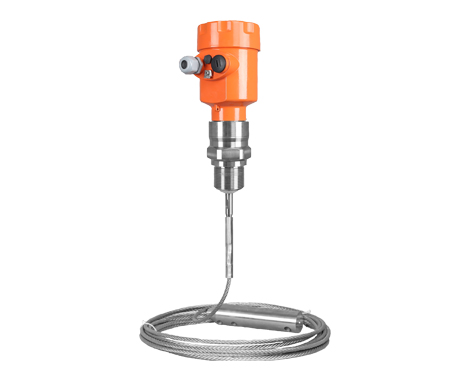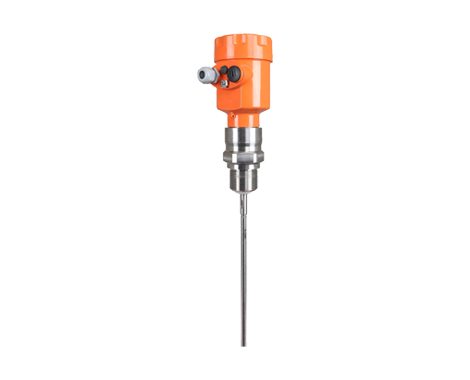Introduction
principle
Guided wave radar is a measuring instrument based on the principle of time travel. The radar wave runs at the speed of light, and the running time can be converted into a level signal through electronic components. The probe emits high-frequency pulses and conducts along the cable or rod probe. When the pulses meet the surface of the material, they are reflected back and received by the receiver in the instrument, and the distance signal is converted into a level signal.
enter
The reflected pulse signal is conducted along the cable or rod probe to the electronic circuit part of the instrument, and the microprocessor processes the signal to identify the echo generated by the microwave pulse on the surface of the material. The correct echo signal identification is completed by intelligent software. The distance D from the material surface is proportional to the time travel T of the pulse: D=C×T/2 where C is the speed of light. Since the distance E of the empty tank is known, the material level L is: L=ED
output
Set by entering empty tank height E (= zero point), full tank height F (= full scale) and some application parameters, the application parameters will automatically adapt the instrument to the measurement environment. Corresponds to 4…20mA output.
Measuring range
F——measurement range E——empty tank distance B——top blind area
H——The minimum distance from the probe to the tank wall The top dead zone refers to the minimum distance between the highest material surface of the material and the measurement reference point. Bottom dead zone is a distance near the very bottom of the cable that cannot be accurately measured. The effective measurement distance is between the top dead zone and the bottom dead zone.
Notice:
Reliable measurement of the level in the tank can only be guaranteed when the material is between the top dead zone and the bottom dead zone.



